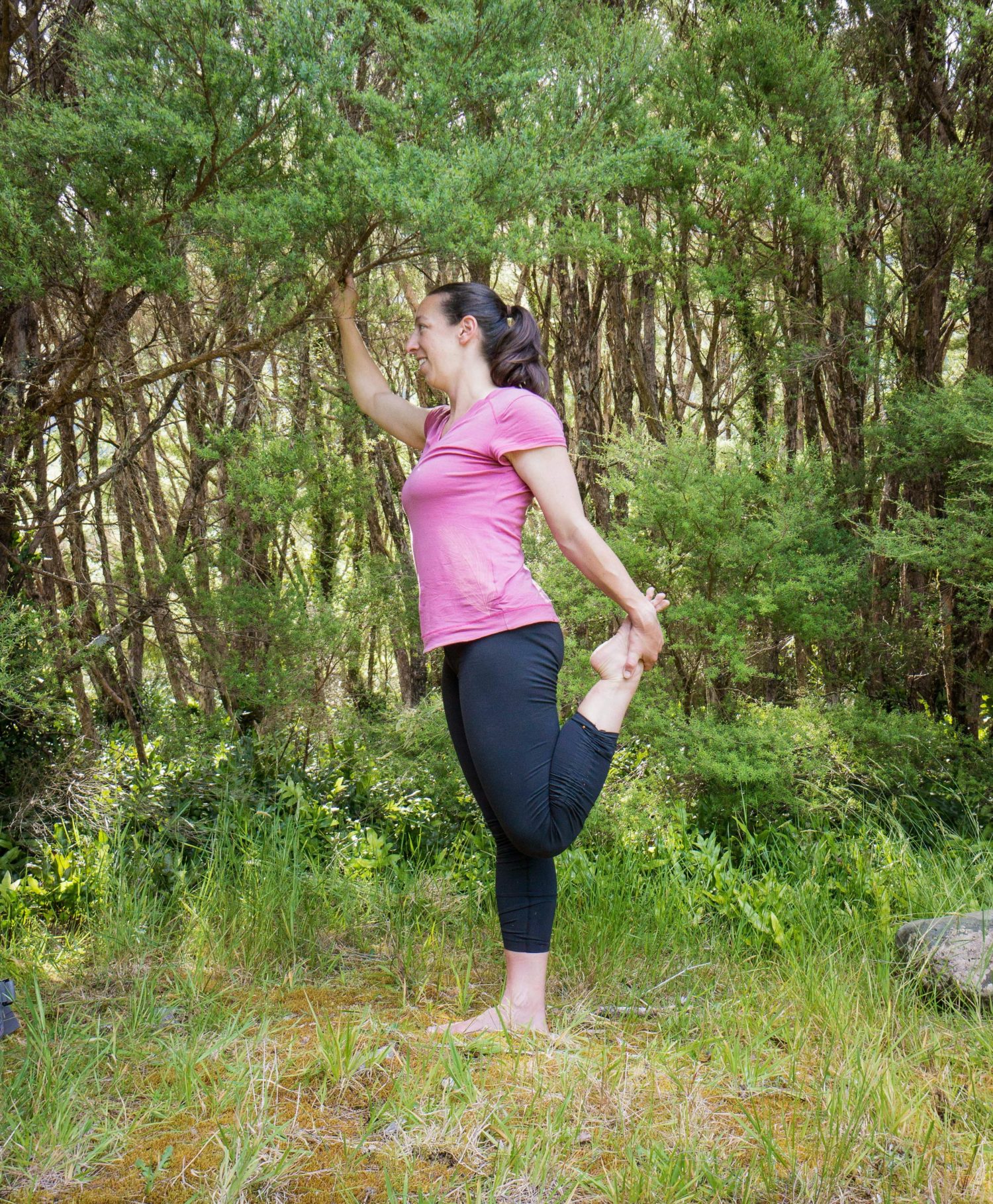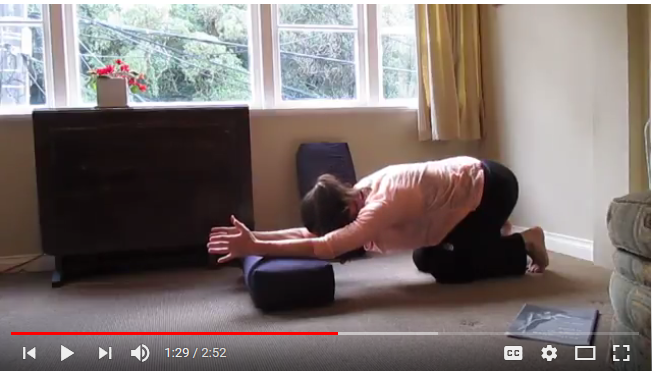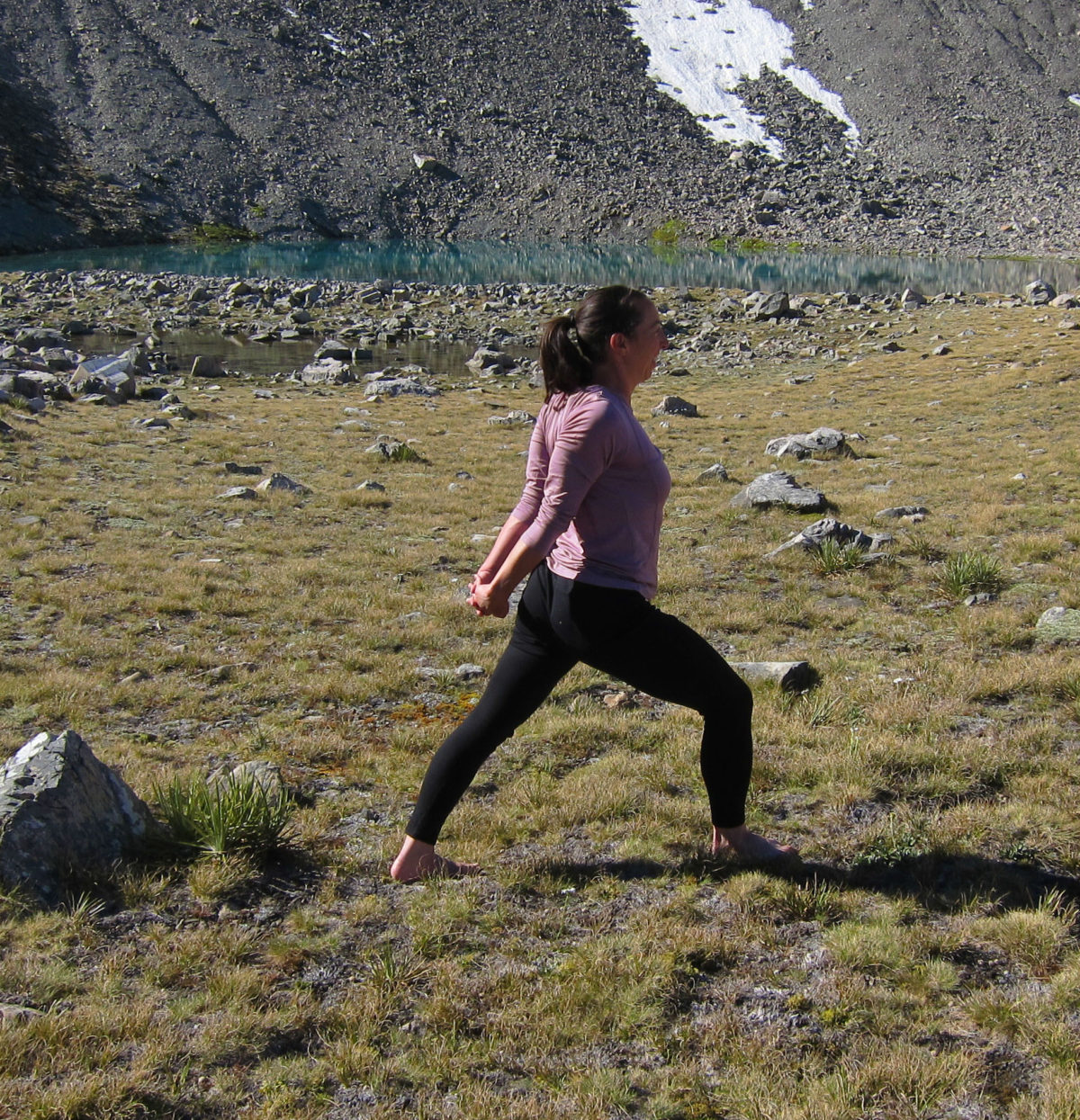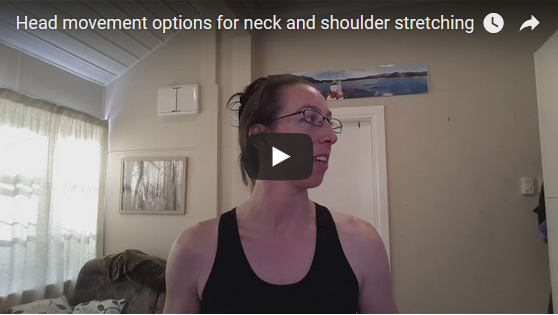Spending so much time hunched or rounding forward puts strain on the upper back – whether it’s from sitting or staring at a phone screen. While stretching the muscles in the chest will help your body ease back to a more a neutral position in your spine, the fascia in the upper back also needs stretching and release.
It’s a tough area to stretch – particularly the muscles and fascia in between the shoulder blades. It can be difficult to stretch this area because often the muscles and fascia are already elongated, or in a lengthened/stretched position. Just think about how they are being pulled when you hunch forward all the time.
One way to safely and effectively stretch muscles and fascia that are already quite long, is to load these muscles while they are in a stretched or lengthened position. That means lengthening or stretching the muscles/fascia, and then making them work, or getting them to contract.
The stretch below comes from the Yoga Synergy method. In this position we are using our own body to create load on lengthened or stretched muscles and fascia.

How to do it:
- Lift up your left leg and clasp your hands (or interlace your fingers) under your left thigh.
- Let all the weight of your leg rest in your hands. If you find challenging or distracting to balance on one leg, you can rest the toes of your left leg on a chair or stool.
- With the weight of your leg gently pulling your hands down, bend your elbows out to the sides and let this gently pull your chest forward – yes your back should round forward in this position. Remember we want to length the muscles and fascia.
- Relax your head forward – there should be no tension, no strain in your neck.
- If you already find a stretch in the back, then stop here.
- If you would like a deeper stretch, slowly press your left thigh into your hands, while your hands resist. As your hands resist, you should feel the muscles of your back tighten to resist this pull – this is loading the lengthened muscles and fascia.
- Just hold this position for a breath or two, then switch sides. You can do the stretch a few times, but be careful not to over do it.
Be careful if you have shoulder or spinal injuries. For injuries don’t press your leg down and even consider resting your toes on a chair so you can more easily control how much work your upper body does to hold your leg.




